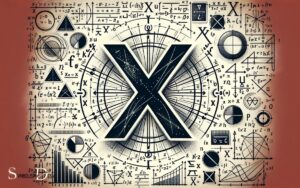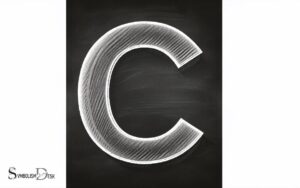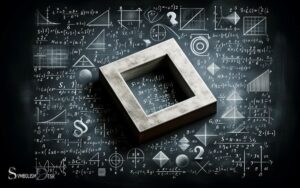Math All Real Numbers Symbol: Blackboard Bold!
The symbol for all real numbers in mathematics is denoted by the capital letter R in boldface (R) or blackboard bold (()). It represents the set of all real numbers, which includes both rational and irrational numbers, as well as integers and natural numbers.
The symbol is essential for expressing the domain of functions, solutions to equations, and intervals in analysis. The real number system is a continuous and infinite set, and the symbol () is used to represent it.
This set is fundamental to many areas of mathematics:
The symbol () encapsulates the vast continuum of numbers used for calculation, measurement, and modeling.

Key Takeaway
Origin and Meaning of the Symbol
The symbol for all real numbers in mathematics, denoted as ℝ, originated in the late 19th century and signifies the set of all numbers that are not imaginary. The symbol ℝ is widely used in math formulas and equations to represent the set of real numbers. In the context of computer coding and digital communication, the math formula unicode for the symbol ℝ is U+211D. This unicode allows the symbol to be accurately represented and displayed in various digital formats.
The concept of real numbers encompasses all rational and irrational numbers, such as integers, fractions, and irrational constants like π and √2.
The symbol ℝ is derived from the German word “reell” which means “real.” It is used to represent the continuous number line, including both positive and negative numbers, along with zero.
This symbol plays a crucial role in various mathematical contexts, including algebra, calculus, and analysis, where it is used to denote the domain and range of real-valued functions, intervals, and solutions to equations.
Understanding the origin and meaning of this symbol is fundamental to grasping the essence of real numbers in mathematics.
Representation in Set Theory
Representation of all real numbers in set theory involves defining the set of real numbers using appropriate mathematical notation. The set of real numbers is denoted by the symbol ℝ, and it encompasses all the rational and irrational numbers.
In set theory, the representation of all real numbers can be achieved through various methods, including:
- Interval notation: This method represents the set of real numbers as intervals on the real number line, such as (a, b) or [a, b].
- Set-builder notation: It defines the set by indicating the properties that its elements must satisfy, such as {x | x is a real number}.
- Decimal expansion: Real numbers can be represented by their decimal expansions, allowing for a clear and finite representation.
- Dedekind cuts: This method defines real numbers in terms of the rational numbers, providing an alternative construction of the real number system.
Usage in Calculus and Analysis
Real numbers play a vital role in calculus and analysis, particularly in the study of limits, continuity, and derivatives. When evaluating limits, real numbers are essential in determining the behavior of functions as they approach certain values.
Additionally, the concept of continuity relies on real numbers to define the smoothness and connectedness of functions.
Real Numbers in Limits
In the context of calculus and analysis, real numbers are utilized in limits to describe the behavior of functions as the independent variable approaches a specific value.
Real numbers play a crucial role in understanding the concept of limits, which is fundamental in calculus and mathematical analysis.
Here are some key points to consider:
- Real numbers provide a precise way to express the notion of approaching a particular value in mathematical functions.
- They allow for the rigorous definition and manipulation of limits, enabling the study of continuity and differentiability of functions.
- Real numbers help in analyzing the convergence or divergence of sequences and series, which are essential in various mathematical and scientific applications.
- Understanding the behavior of real-valued functions at specific points relies heavily on the concept of limits involving real numbers.
This understanding sets the stage for exploring continuity and real numbers.
Continuity and Real Numbers
Continuity plays a fundamental role in the application of real numbers within calculus and mathematical analysis. In calculus, a function is considered continuous if it has no abrupt changes in value. This concept is crucial in analyzing the behavior of functions and their derivatives.
The table below provides a summary of key properties of continuous functions, which are essential for understanding their behavior in calculus and analysis.
| Property | Definition | Example |
|---|---|---|
| Continuity at a Point | ( f(x) ) is continuous at ( x = a ) if ( _{{x o a}} f(x) = f(a) ) | ( f(x) = x^2 ) is continuous at ( x = 2 ) |
| Continuity on an Interval | ( f(x) ) is continuous on ( [a, b] ) if it is continuous at every point in ( [a, b] ) | ( f(x) = (x) ) is continuous on ( [0, ] ) |
| Intermediate Value Theorem | If ( f(x) ) is continuous on ( [a, b] ), then it takes on every value between ( f(a) ) and ( f(b) ) | ( f(x) = x^3 – 3x^2 + 2x ) on ( [0, 2] ) |
| Continuity and Limits | If ( f(x) ) is continuous at ( x = a ), then ( _{{x o a}} f(x) = f(a) ) | ( f(x) = 2x – 1 ) is continuous at ( x = 3 ) |
| Continuity of Composite Functions | If ( f(x) ) is continuous at ( x = a ) and ( g(x) ) is continuous at ( f(a) ), then ( g(f(x)) ) is continuous at ( x = a ) | If ( f(x) = ) and ( g(x) = x^2 + 1 ), then ( g(f(x)) ) is continuous at ( x = 4 ) |
Understanding these properties of continuous functions is essential for further comprehension of real numbers in derivatives.
Real Numbers in Derivatives
Frequently, real numbers are employed in calculus and analysis to compute derivatives and analyze the behavior of functions.
Real numbers play a crucial role in the study of derivatives, offering a foundation for understanding the rate of change and the slope of curves.
Their significance is evident in various aspects:
- Real numbers serve as the domain and range of many functions, allowing for the determination of limits and continuity.
- The use of real numbers in derivatives aids in examining the concavity and inflection points of functions.
- They facilitate the interpretation of the behavior of functions through concepts such as increasing, decreasing, and stationary points.
- Real numbers enable the application of derivative rules and techniques to solve real-world problems in areas like physics, engineering, and economics.
Understanding the role of real numbers in derivatives is essential for comprehending their inclusion in complex number systems.
Inclusion in Complex Number Systems
The inclusion of real numbers in complex number systems is a fundamental concept in mathematics. In complex numbers, real numbers are a subset, with the real axis representing the real numbers.
This extension to complex numbers allows for the representation and manipulation of both real and imaginary quantities, providing a powerful framework for various mathematical applications.
Real Numbers in Complex
Real numbers are included within the complex number system. This means that every real number can be considered as a complex number with its imaginary part being 0.
In the context of complex numbers, real numbers are located on the horizontal axis of the complex plane.
Understanding the inclusion of real numbers in the complex number system is essential in various mathematical and scientific applications.
- Every real number can be expressed as a complex number in the form a + 0i, where a is the real number.
- The set of real numbers is a subset of the set of complex numbers.
- Real numbers can be operated upon using the same arithmetic operations as complex numbers.
- Real numbers play a crucial role in complex analysis and the study of complex functions.
Complex Numbers as Extension
In the context of complex numbers, the inclusion of real numbers as a subset is a fundamental aspect of the number system’s extension.
Complex numbers, in the form a + bi, consist of a real part (a) and an imaginary part (bi), where ‘i’ represents the imaginary unit. Real numbers can be viewed as complex numbers with a zero imaginary part, thus forming a subset within the complex number system.
This extension allows for the representation of a broader range of quantities, including solutions to equations that have no real roots.
Moreover, the inclusion of real numbers in the complex number system enables the application of complex numbers in various mathematical and scientific fields, such as engineering, physics, and signal processing.
Understanding the extension of real numbers to complex numbers is crucial for exploring applications in probability and statistics.
Applications in Probability and Statistics
Applications of real numbers in probability and statistics are extensive and fundamental to understanding uncertainty and variability in data analysis.
Real numbers play a crucial role in various statistical and probabilistic concepts, including mean, median, standard deviation, and probability distributions.
Here are some key applications:
- Descriptive Statistics: Real numbers are used to summarize and describe the main features of a dataset, such as central tendency and dispersion.
- Probability Calculations: Real numbers are employed to calculate the likelihood of events and outcomes in probabilistic scenarios.
- Regression Analysis: Real numbers are utilized to model relationships between variables and make predictions based on statistical patterns.
- Hypothesis Testing: Real numbers are pivotal in determining the significance of research findings and drawing conclusions from sample data.
Understanding the applications of real numbers in probability and statistics is essential for making informed decisions based on data analysis. This knowledge forms the basis for delving into the symbolic representation in algebra.
Symbolic Representation in Algebra
The symbolic representation in algebra encapsulates mathematical relationships and operations using abstract symbols and variables, facilitating precise manipulation and analysis of mathematical expressions.
Building upon the foundation laid by real numbers in probability and statistics, symbolic representation in algebra allows for the concise articulation of mathematical concepts and relationships within a formal framework.
| Algebraic Symbol | Meaning | Example |
|---|---|---|
| x | Variable | 2x + 3 |
| y | Variable | 4y – 7 |
| a | Constant | 5a |
| b | Constant | 2b + 1 |
| c | Constant | 3c – 4 |
In algebra, these symbols and their interactions represent real-world quantities and relationships, providing a powerful tool for solving equations, analyzing functions, and modeling various phenomena in mathematics and beyond.
Conclusion
The symbol for all real numbers holds significant meaning in mathematics across various fields.
Its origins and representation in set theory, calculus, complex number systems, probability, and statistics, as well as its symbolic representation in algebra, demonstrate its universal applicability.
How can this symbol continue to expand our understanding of the infinite nature of real numbers?






